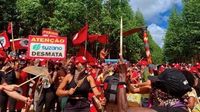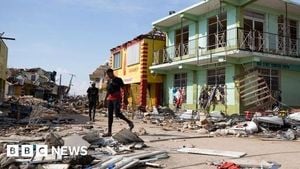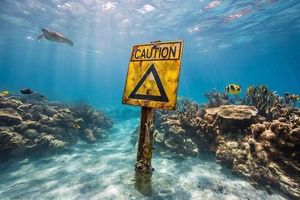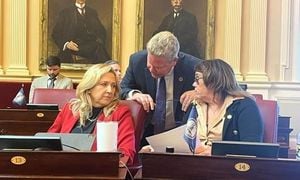Brazil, a country often celebrated for its lush forests and rich biodiversity, now finds itself at the heart of a complex struggle over rare earth minerals, environmental sovereignty, and the future of its rural communities. As of September 15, 2025, Brazil holds a staggering 23% of global rare earth mineral reserves—second only to China—according to the 2025 U.S. Mineral Commodity Summaries. Yet, despite this natural wealth, the nation accounts for just 1% of global rare earth production, a figure that is expected to rise sharply as new mining projects gain momentum.
The race to mine and process these vital elements, essential for everything from smartphones to wind turbines, is intensifying across Brazil. The rush has triggered a wave of concern among local leaders, environmentalists, and rural families, especially in the wake of 187 mining applications targeting 96 rural settlements registered with INCRA, the national land reform institute. The state of Bahia leads the pack with 88 applications, followed by Goiás with 53 and Pernambuco with 21, according to research by the Mining Observatory.
At the center of this unfolding drama is the Reunidas Pau Brasil Sustainable Development Project, a rural settlement in Bahia’s Itamaraju municipality. Established in 2009 and home to 48 families, this community has become a focal point for rare earth mining ambitions. Multiverse Mineração Ltda., a company that began operations near the village of São Paulinho, reported in 2022 that it had discovered deposits “containing excellent concentrations of rare earth minerals in ionic clay” over nearly 30,000 hectares (74,000 acres). The National Mining Agency (ANM) confirms that these are among the most advanced mining applications in the country.
But beneath the surface, another treasure lies: in 2020, researchers discovered a 600-year-old Brazilwood tree (Paubrasilia echinata) within the settlement, boasting a trunk circumference of 7.13 meters (23 feet)—the largest recorded in Brazil. This ancient tree, once a symbol of the nation’s colonial past and now endangered, provides shade for the cacao trees cultivated by local families through agroforestry. Brazilwood, the country’s national tree and namesake, was heavily exploited by Portuguese colonizers for its prized red pigment and durable timber. Today, only 24% of the original Atlantic Forest remains, and just 12% is considered well-preserved, leaving the species teetering on the brink of extinction.
The looming threat of mining has sparked fears of environmental devastation and renewed land disputes. According to André de Lima Maia, an agricultural engineer and state leader of the Landless Workers’ Movement (MST) in Bahia, "It could get much worse. It could worsen the situation of land grabbing, threats, gunmen, psychological harassment—all of which are already occurring timidly. But, as we are strugglers, we will fight for the rights of the people." His concerns echo those of other activists who warn that mining activities risk exacerbating land conflicts and destroying preserved forests, including the precious Atlantic Forest biome where Brazilwood is endemic.
Meanwhile, the government of Bahia has shown support for rare earth exploration, signing a memorandum of understanding with Borborema Mineração to facilitate a rare earth processing plant. The state’s Secretariat of Economic Development (SDE) announced a projected investment of 3.5 billion reais (approximately $650 million) for two phases: first, producing rare earth oxide mineral concentrate, and later, building a plant to separate rare earth oxides. Yet, the SDE maintains, "SDE has no stake in the project; only the company can withdraw from it. Furthermore, the project’s viability is the responsibility of the licensing agencies; therefore, only these agencies can deny it."
Other states, too, are feeling the pressure. In Goiás, particularly the municipality of Minaçu, 37 mining applications are pending in an area already scarred by decades of asbestos mining. Ricardo Junior de Assis Fernandes Gonçalves, a geography professor at Goiás State University, described the region as a "new extractive frontier that is predatory and threatens the remaining rural populations in Goiás; people who still live on the land, in a relationship with water, with crops, with their historically constituted territories."
In Pernambuco, Lenivaldo Marques da Silva Lima of the rural workers’ federation Fetape warned that the Zona da Mata region is undergoing “severe environmental changes,” with sugarcane fields being cleared for cattle and extensive livestock farming—practices already devastating the climate and environment. "This will affect the production of healthy food and leave people landless. We need to fight against this," he insisted.
These concerns are not isolated. Across Brazil, the struggle over land and resources is deeply entwined with broader issues of environmental and food sovereignty. As environmentalist Miguel Enrique Stedile, a member of the MST’s National Coordination, wrote, "The battle to preserve our environment is intrinsically linked to the defense of our national sovereignty. How our country positions itself on the global stage, who our natural resources serve, and who dictates the rules of the environmental game are central issues in ensuring a sustainable future for the Brazilian population."
Stedile and other rural movement leaders argue that the root of Brazil’s environmental crisis lies in a model of development driven by profit, often at the expense of people and nature. Agribusiness, with its focus on monoculture for export, deforestation, and intensive use of pesticides and water, has been a major driver of environmental degradation. In 2023 alone, 3.7 million hectares of forest were cleared worldwide, much of it for livestock and commodity crops, according to global data cited by Stedile.
The environmental crisis is further complicated by international mechanisms such as carbon markets. These systems, designed to offset greenhouse gas emissions, allow polluting countries—mainly in the Global North—to purchase "carbon credits" linked to forests in Brazil and other countries of the Global South. Stedile criticized this approach, arguing, "The ‘right to pollute’ is transformed into a commodity. Polluting companies and countries, located mainly in the Global North, can offset their emissions by purchasing ‘carbon credits’. These credits are linked to forests in countries in the Global South, such as Brazil." This, he says, commodifies natural processes and undermines national sovereignty, as control over forests and the lives of indigenous and traditional communities is ceded to international financial interests.
Brazil’s environmental and political landscape is further complicated by ongoing tensions between agribusiness interests, rural movements, and the federal government. Recent protests and political maneuvers—such as those on September 7, 2025, linked to anti-democracy movements and agribusiness—highlight the deep divisions over who should control Brazil’s land and resources.
In response, popular movements are advocating for a new model: one that prioritizes food sovereignty, agroecology, and the legal recognition of indigenous and traditional territories. Their proposals include ending illegal deforestation by 2025, achieving zero legal deforestation by 2027, and halting the expansion of the agricultural frontier. They argue that only by asserting sovereign control over land, water, and forests can Brazil chart a sustainable and equitable future.
As the Federal Public Defender’s Office moves to challenge the regulations allowing mining within rural settlements, and as communities and activists continue to resist, Brazil stands at a crossroads. The choices made now will shape not only the fate of its rare earth reserves but the very soul of its land and people.




